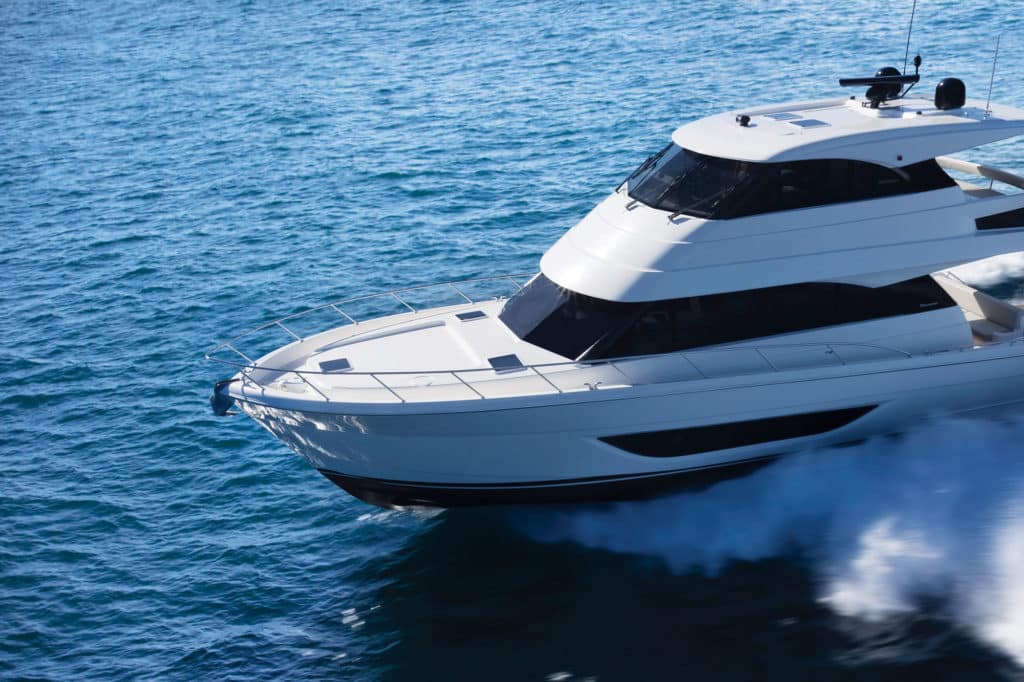
As we departed the legendary Haulover Inlet of Miami—known for confused waters— the seas were, well, turbulent. Not unexpected because the weather report had predicted 4- to 6-footers outside of it.
That report was wrong.
As we turned the bow north, the Maritimo M55 met 6- to 8-footers, with some 10s mixed in. Our captain, Shawn Minihan, didn’t hesitate when he pushed the throttles down. After that point, we regularly went astronaut (you know, totally weightless) on more than a few launchings at 20-plus knots.
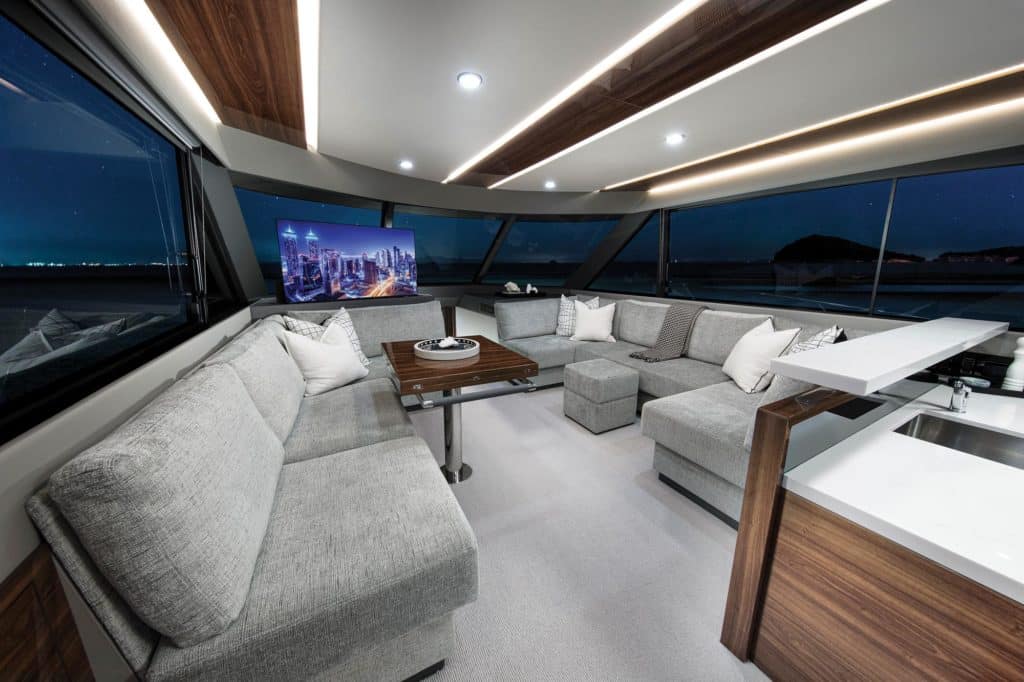
The M55 was a rock, cleaving the seas even though we were sluiced with solid water onto the windscreen of the enclosed bridge. There was not a squeak or groan even though we were moving somewhere around 35 tons of yacht into the air and then back into deep, green-water valleys.
Australian yachts have a reputation for being tough because they must deal with whatever the Pacific and Southern oceans throw at them, but many also have a rough-and-ready reputation for spartan interiors. What sets the M55 apart is that it also has grain-matched joinerwork (walnut or teak) rivaling that found on mega-yachts, innerspring mattresses, ice makers (everywhere), wine chillers and wool carpets with Rolls-Royce thickness in the staterooms.
Tom Barry-Cotter—son of Bill Barry-Cotter, the founder of Maritimo, which has built more than 4,000 boats—is a world champion ocean-racing powerboat driver. His experience found its way to the hull lines of the M55. The duo incorporated large, full-length strakes to the variable-deadrise hull to soften the ride and a wide chine to throw spray aside.
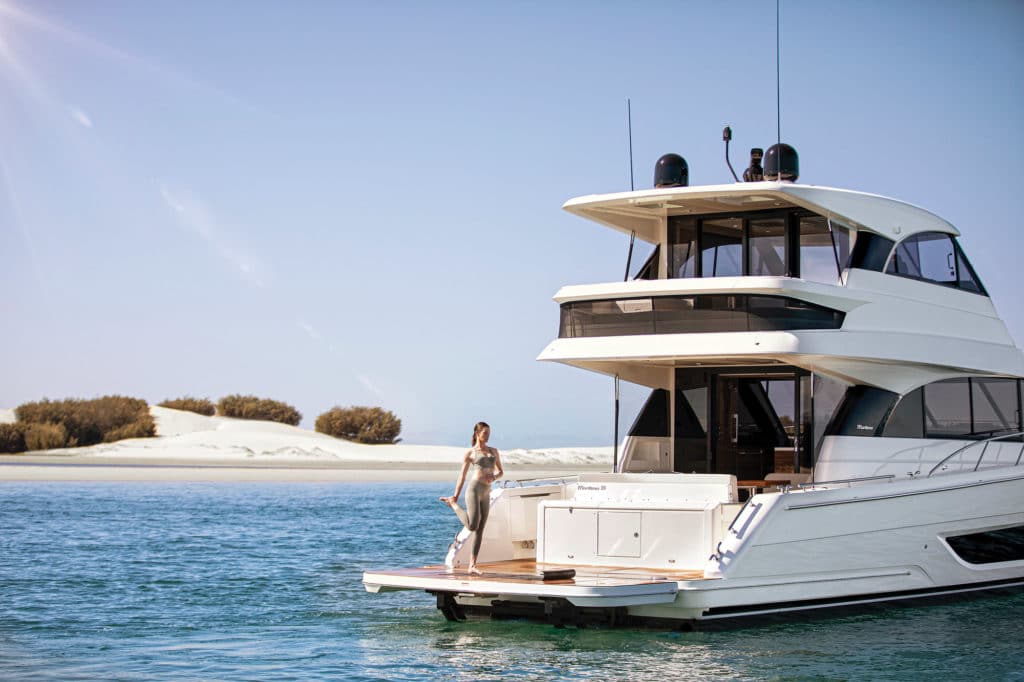
The flybridge kept us dry and out of the Florida sun, and cooled us with dedicated 12,000 Btu air conditioning. (Another 12,000 Btu cools just the salon, and yet another unit cools the staterooms.) I chose the deeply upholstered, J-shaped settee opposite the helm for my flight time, while the captain and crew had the twin pedestals behind the tidy dash. A much-appreciated touch is the inside staircase to the salon, so there is no dangling from a ladder to reach the lower deck.
Just abaft the sky lounge is an alfresco deck area that the overhang protects, which has recessed tracks for a full enclosure. The same setup is repeated in the main-deck cockpit, increasing the all-weather-use options for dining or lounging.
The main deck has twin settees and an airy galley aft. The galley has a buffet-size island, a surprising amount of stowage in swing-out pantries under the counter, a four-burner Miele cooktop, a convection microwave and a dishwasher.
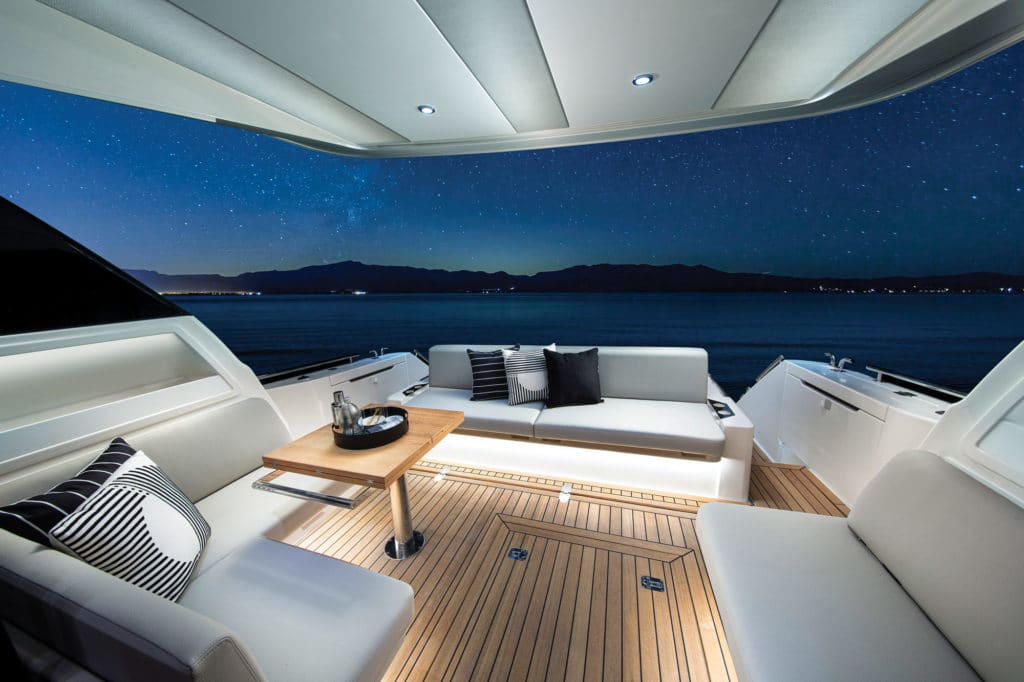
Bi-fold doors open from the M55’s galley to the cockpit, which has lounge seating followed by what Maritimo aptly calls the “adventure deck.” This is the single-level deck past the grill and sink that leads to the hydraulic swim platform. A lazarette “toy box” can hold dive gear or bikes, and it’s big enough to stow a 9-foot-2-inch Williams Minijet 280 tender. A 550-pound davit can be ordered to launch it, or owners can carry the tender on the swim platform. Yet another option: a sport-fish-style davit and chocks on the foredeck to replace the sun pad.
In the guest areas, Maritimo uses the M55’s entire 17-foot-2-inch beam to provide a master stateroom with a king-size island berth, en suite head and stall shower, and 6-foot-4-inch headroom. Just forward and to starboard is a guest stateroom with twin berths that slide together. The real surprise is the VIP stateroom forward, which has an angled island queen berth with full walk-around real estate. The en suite head with a shower doubles as the day head and serves the guest stateroom.
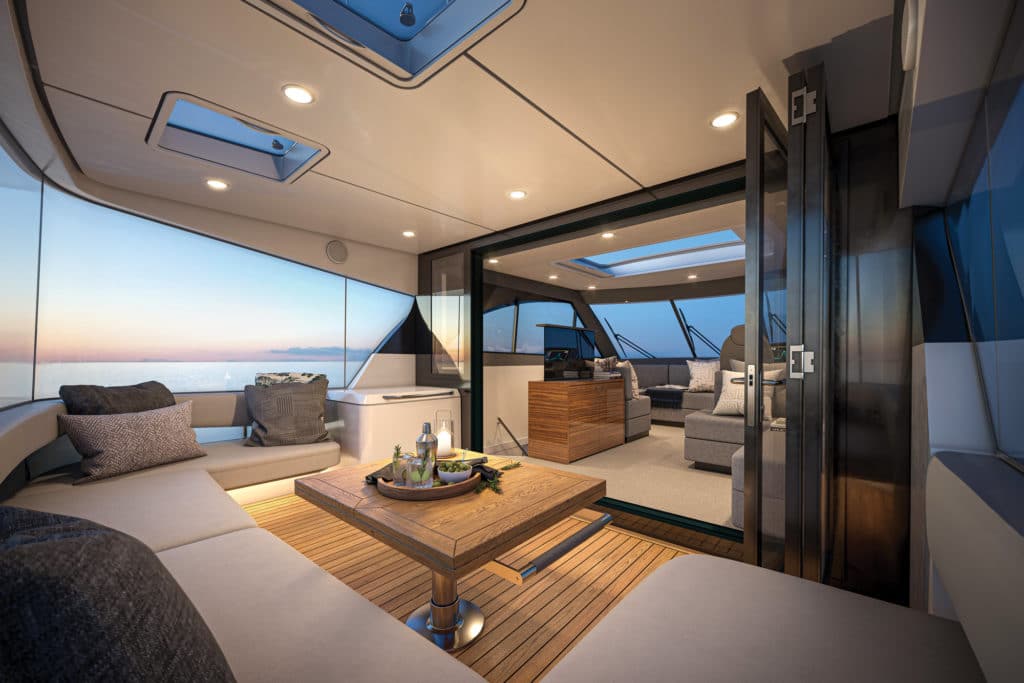
With guests aboard or not, the M55 is designed for a short-handed couple to cruise. A wing helm station is hidden to port in the cockpit for easier docking. The engine room has nearly 6 feet of headroom and space to move between the engines for regular maintenance tasks. Points to Maritimo for positioning all the electronics and batteries above the high-water incursion point.
Power options include 1,000 hp Volvo Penta D13 diesels, 900 hp Scania DI13 diesels or 1,000 hp Caterpillar 12.9 diesels. The M55 I got aboard had the Cats. While conditions prevented us from getting the M55 to its top hop, the Caterpillar test report on this same yacht showed a top speed of 34.6 knots with the Teignbridge Aquafoil five-blade props. I can personally attest that at our speed of 20ish knots, we were at 1,600 rpm and just 65 percent load, which should make these Cats run for a long time.
This M55 also had a Seakeeper gyrostabilizer, and I’m sure it was working hard, but the yacht’s seakindly hull shape also kept us comfy even high above the waterline. One clear indicator of the M55’s tough-guy side was the oversize Muir capstan/windlass on the bow, linked to an equally oversize Bruce anchor locked in the roller.
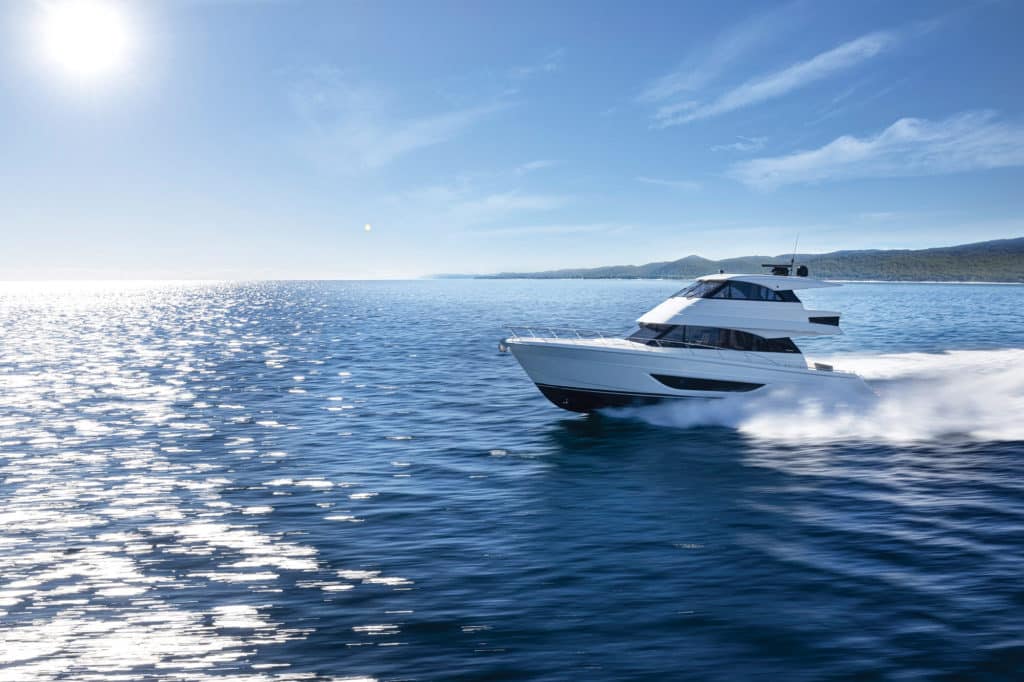
This Australian import is as stylish as a white dinner jacket but also as tough as a prop on the rugby field. While most owners won’t be out on the M55 on days like we experienced, it’s good to know the boat can handle whatever the ocean chooses to dish out.
Bluewater Build
The Maritimo M55 is built tough in Australia, as you’d expect from a country surrounded by water and with long distances between harbors. There is a solid fiberglass hull with a one-piece liner and a patented bonding system. The deck and superstructure are fiberglass with foam coring, and the main bulkheads are free-standing with fiberglass cores. A watertight collision bulkhead is forward.
Scania Expands in North America
Americans tend to think of Caterpillar, Cummins, Volvo Penta or MAN for diesels, but Scania is making inroads on this side of the pond. Based in Sweden, Scania’s products are found on European trucks and buses, and on the water. The range of 9-, 13- and 16-liter diesels to 1,150 hp propel everything from patrol boats to yachts. The company has a comprehensive dealer and service network throughout North America.
Sit Tight
The Maritimo M55 we got aboard had a Bruce anchor. Originally designed to hold oil rigs firmly in place, the Bruce anchor has become a go-to for cruising skippers because it holds well in a variety of bottom conditions, from mud to sand to gravel.With one-piece construction and no moving parts, the anchor’s only weakness is in thick grass or hard clay, where it won’t grab.
Take the next step: maritimoamericas.com









